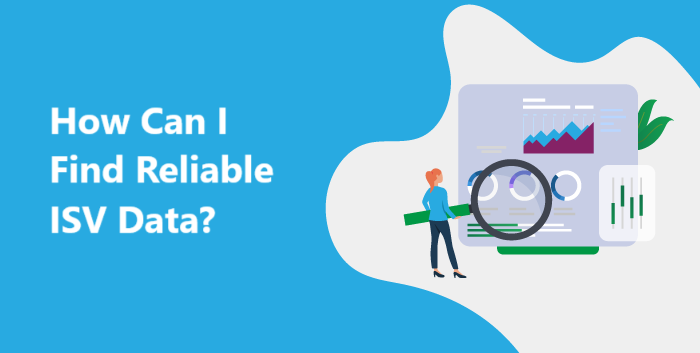Whether you’re prepared to admit it or not, people are not lining up around the block to attend your webinar. Unless you’re Beyoncé giving tips on how to become a millionaire, chances are you are looking for ways to boost registrations to ensure attendance the day of the big event.
Top Reasons Why People Don’t Register or Attend, and What You Can Do About It
It’s important to understand the main reasons why people are not interested in attending webinars so that you can combat those challenges from the start. Here’s our list of top reasons why people don’t attend (based on feedback gathered from some of our outreach campaigns):
Reason 1. Timing
“It’s not a convenient time.”
“My schedule is fully booked that day.”
“I can’t commit to an entire hour.”
“I’ll be travelling that week.”
These are some of the typical responses we come across when trying to promote webinars for our clients. In fact, the number one reason why people don’t register for an online event has nothing to do with the webinar topic itself, or the quality of the speakers. The takeaway here is that timing is everything. I don’t care how interesting your topic is, or that you have top-notch experts as speakers; if I have to get up at 3 am to watch it, I’m not getting up. I have declined to attend many a webinar for the pure and simple fact that it was scheduled at an inconvenient time. In fact, any time a webinar is listed on a PST time zone, I know it’s not for me because it is inevitable that it will be taking place after my normal working hours.
It’s always hard to find a time that is going to fit the schedules of multiple people, which is why it may be preferable to organize more than one (more on that in a minute). Webinars that are over a half an hour long can also be a turn-off for people who may not have that much time to give. While an hour may not seem like a long time, you need to remember that as a society, our attention spans are dwindling. And people truly are busy.
Sometimes it’s the topic itself that isn’t “timely” for the prospect; but more on that in Reason 2.
What you can do:
Host webinars at the right time for your audience
Don’t target decision-makers based all over the world and expect that they’ll all be able to join your webinar at the same time. Organizing one per geographical region (ie one for APAC, one for EMEA and one for the Americas) can help. Another idea is to give prospects the choice of a few different time slots to pick from. While this means repeating the webinar more than one time, it will also mean that you’ll increase your chances of finding a time slot that works for your target audience. You’ll also be able to counter-argue the “I’m travelling that week” response with times that correspond to business hours locally, wherever the prospect may be.
Keep the webinar short and to the point
Keeping the webinar to a half hour is a great way to ensure that people attend. If you don’t think you can cram in all the information you want into 30 minutes, think of this as an opportunity: you can create a webinar series devoted to the various areas of your theme. This will help you continue the momentum with some (repeat) prospects, while not missing out entirely on others (who wouldn’t join otherwise). It also enables you to create a buzz around your brand, and can help position yourself as a thought leader. So a win-win scenario no matter how you look at it.
Provide on-demand content to registrants
Sometimes people have the best of intentions and really plan on attending a webinar, only to have something urgent come up at the last minute that inhibits them from connecting. Webinars are not seen as being set-in-stone even when you are registered — this is probably due to the fact that you are not physically meeting the hosts face to face. Unfortunately in our society, this non-committal habit has become the norm, so you can expect that, on average, 50% of your registrations will be no-shows the day of the event. The way to combat this is to record the webinar when it takes place, and provide on-demand content to the ones who don’t attend shortly after it’s past. You can also be sure to invite anyone who didn’t attend to your next webinar; another good reason to opt for the series idea I mentioned earlier.
Start e-mail marketing early
Profiling the right contacts and obtaining their explicit opt-ins to email them can be time consuming and challenging. Because of GDPR, buying data or renting email lists (like so many marketers did in years past), is a NO GO. We recommend starting a data-build at least three months prior to the webinar; that way you have the time you need to identify the right people and get their explicit consent so that you can send out a save-the-date email six to eight weeks before the big day.
Reason 2. The topic is not for me
Either the topic is not relevant to my job role, or it’s just not the right time for me to be looking at this are two other reasons why people don’t attend webinars. If the reason is the latter, there’s still a chance for you to get your foot in the door and nurture this prospect over time so that they attend another webinar in the future. If it’s the former, you just didn’t do your homework, which is why data cleansing and building is an essential part of the preparation process.
Don’t forget, webinars are often seen as being clever ways of showing a product demo to many people at one time. If your webinar is perceived in this way, your topic may be a turn off to decision-makers and influencers alike.
What you can do:
Make sure your topic is not a sales pitch
Your topic needs to provide value to the viewer, so it’s important that it not come off as a sales pitch. What issue does your topic address for your audience? What value do you add? Why should your audience want to attend? These are important questions that need to be answered when you are designing your webinar topic. Having a high-quality speaker will lend credibility to the topic as well, especially if you have also invited a third-party expert to present.
Know your buyer personas
In order for you to really understand what topics resonate with your audience, you need to know your buyer personas inside and out. For that, you may need to do some research on them, or segment them into specific groups. If you target several different functional decision-makers, one webinar topic may not resonate with all of them. In this case, it’s better to customize and highly tailor your messages in several different webinars, one for each group.
Navigate to find other decision-makers
It is also possible to find more of the right people by navigating within the accounts you are targeting. Often times one person can recommend another (perhaps more appropriate person) to get in touch with. By asking each prospect you speak with to put you in touch with a colleague, you can increase the impact of your outreach.
Reason 3. Can you just send me some information instead?
Usually this type of response means, “I don’t know you, so what’s in it for me?” It takes a while to establish trust with a new prospect (especially if they have never heard of you before), and it may take some nurturing before you’ll convince him or her to take the plunge. Instead of being pushy, plan ahead for this type of answer.
What you can do:
Nurture prospects with other content
Having other content lined up that you can use to engage prospects is a great way to help increase recognition for your brand. While they may not immediately attend your webinar, you certainly can get them signed up to receive your company newsletter, e-books or white papers, as well as content on demand. By keeping these prospects informed about what you’re doing, they will be more likely to attend other webinars in the future.
Make this part of your ABM strategy
Accounts-based marketing (ABM) and always-on programs are becoming the law of the land in the B2B marketing field. So while you may be looking to drive attendees to one webinar, you need to see that webinar as part of the bigger picture. Many companies we work with only focus on the following up the webinar attendees. While that is of course where the “low-hanging fruit” is, this should not by any means be the only follow-up you do. By spending time nurturing prospects who don’t register (but do express interest in the topic), and following up the ones who do but that don’t attend, you will maximize your initiative.
Consider webinars in local languages
While English dominates global business, that does not mean prospects don’t appreciate localized language content. Think globally, execute locally is not just talk — it is a strategy that can greatly improve your image in local markets. It may not always be possible, but when it is, you should absolutely not hesitate to do it.
Conclusion
Preparing to host a webinar takes time and consideration in order to find the right topic, invite the right people, and prepare the right outreach program. Our advice: Don’t rush it. Scrambling at the last minute to boost registrations is stressful and inefficient. Take the time you need to do it right from the start and you’ll be sure that your webinar will be a success.
For more tips on how to create a buzz for your next event, click here to download our best practices guide.









